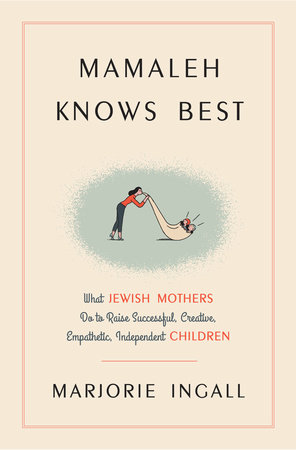9 Fun Ways to Keep Kids Interested in Reading and Storytelling
by Marjorie Ingall
It can sometimes be a struggle to get kids interested in reading, but it’s so important, in ways we may not always think about. Reading and storytelling are vital to preserving cultural identity, developing healthy brains, and cultivating curiosity in youngsters. In the following excerpt from Mamaleh Knows Best: What Jewish Mothers Do to Raise Successful, Creative, Empathetic, Independent Children, author Marjorie Ingall offers a simple methodology for getting kids interested in storytelling and helping them find their sweet spot when it comes to reading.
1. Storytelling doesn’t just mean reading! Listen to storytelling podcasts and radio shows like The Moth. Play audiobooks in the car. Retell folktales, fairy tales, urban legends, family lore. Whenever you’re telling or reading a story, keep your kid engaged by asking them open-ended questions about the characters or plot, questions the kid can’t answer with a yes or no.
2. If your kid doesn’t like to read, don’t give up. You haven’t found the right book. Explore different kinds of fiction, poetry, graphic novels, books of world records and kooky facts, profiles of presidents and sports heroes, gross-out science books. Get suggestions from a cool teacher or librarian. If your kid has a learning disability or just isn’t into reading on their own, read aloud to them, tell stories and listen to audiobooks together for as long as your kid will let you.
3. You can’t go wrong with funny. For younger kids, rhyming books are great; they can guess at each rhyme, so there’s built-in suspense. Have no shame when you read aloud: Do accents. Take dramatic pauses. Modulate your voice, raising and lowering it to build narrative momentum. Let your children mock you. My kids always loved when I cried at the end of Charlotte’s Web or Mrs. Katz and Tush. They’d look at each other, snickering, clearly thinking, Poor Mom, she’s daft.
4. Dedicate time to reading. Make it a ritual. Make it part of your day. If your kid is not a sit-still kid, even 15 minutes of reading a day is better than nothing. And again: You might just not be reading the right book.
5. Let kids choose their own books. I’ve never told my kids they weren’t allowed to read something. I learned this from my fabulous mom, who watched me read Deb Putnoi’s copy of Judy Blume’s Forever at a house party when I was nine. Adults were giving her an earful about “letting me” read something so risqué, but she kept replying with variants of “If she has questions, she’ll ask me.” That was a big lesson for me, and now that I’m a parent, I’ve exercised veto power only at bedtime, and only once or twice. Because when [my daughter] Josie got scared she became a hysterical chaleria (excessively nervous person: literally “person with cholera”) and would fight sleep for days and make us all want to die of exhaustion. (Advice within advice: Let your children read Roald Dahl’s The Witches only during daylight hours.) And if your kid is reading books you don’t approve of — from sexist comic books to poorly written sparkly vampire romance, the worst thing you can do is ban what they love. Talk about why you think certain books are dumb or offensive (or better, let your kid make a book recommendation, actually read the thing, and then discuss the book together), but don’t shame your kid for having different tastes from yours.
6. Harness peer pressure. Kids take book recommendations from other kids more seriously than they do recommendations from adults. When Josie went through a sci-fi and fantasy stage, a genre about which I’m clueless, she got book suggestions from her friend Nora.
7. Get your kid into series books. They may not be the greatest literature, but they create anticipation and identification with recurring characters. You can always mindlessly borrow or buy the next one in the series, which is a huge relief when you’d rather be thinking about a cocktail than kids’ lit.
8. Kids see through “do as I say, not as I do.” Model the behavior you want to see. Invite your kid to sit next to you on the couch as you both read. Keep books out — in baskets, on shelves, and on coffee tables. The way I got Josie to read Harry Potter — which I knew she’d love but which she stubbornly refused to try because she is contrary like her mother — was to take it on vacation, leave it on the coffee table of our rental house, and say absolutely nothing.
9. Pro Tip: “Two truths and a lie” is a good way to get sullen tweens to tell a story. Here’s the game: At dinner, everyone has to say three things that happened that day, two of which are true and one of which isn’t. Then everyone else has to guess which is the lie. It’s a sneaky way to get anecdotes out of your kids beyond “How was your day?” “Fine.”
Adapted from Mamaleh Knows Best: What Jewish Mothers Do to Raise Successful, Creative, Empathetic, Independent Children by Marjorie Ingall. © 2016 by Marjorie Ingall. Harmony, Crown Publishing Group, Penguin Random House LLC.

